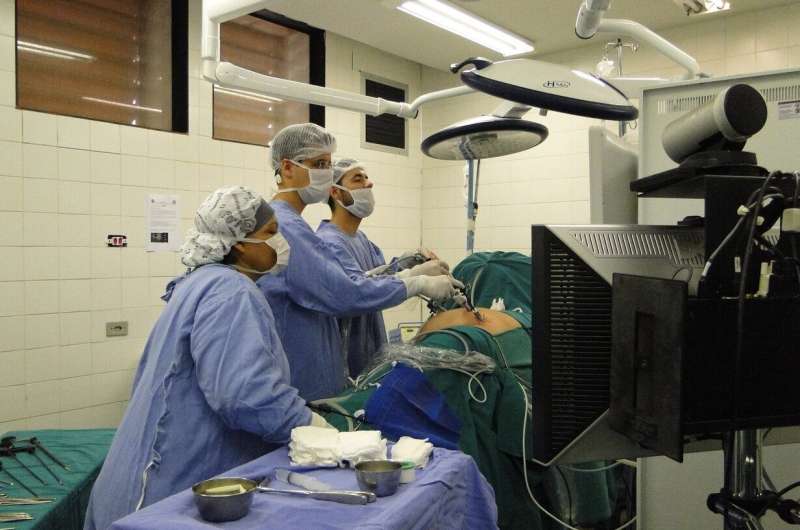This article has been reviewed according to Science X's editorial process and policies. Editors have highlighted the following attributes while ensuring the content's credibility:
fact-checked
peer-reviewed publication
trusted source
proofread
Study finds less invasive, safer option for removing benign pancreatic tumors

Insulinomas are abnormal tumors, usually benign, that grow in the beta cells of the pancreas. Insulinomas make extra insulin, more than the body can use. They can cause hypoglycemia or low blood sugar. Low blood sugar can cause confusion, sweating, weakness, confusion, and even coma. Surgery is the only treatment for patients with insulinoma. However, it is usually associated with a longer time to recover, and loss of healthy pancreatic tissue can lead to diabetes.
In a new study in the Annals of Surgical Oncology, researchers describe a new technique for the minimally invasive removal of these benign tumors located in the challenging posterior head of the pancreas (right side of the abdomen, nestled in the curve of the duodenum (or first part of the small intestine).
The technique called the retro-laparoscopic approach, allows surgeons to safely and effectively remove these tumors without removing healthy pancreatic tissue, thereby preserving organ functionality.
"This finding is important because it offers a less invasive and possibly safer option for the removal of pancreatic tumors, potentially reducing complications and improving patient recovery. Additionally, the technique may lead to less incidence of diabetes and pancreatic insufficiency due to preservation of most of the pancreas tissue," explains corresponding author Eduardo Vega, MD, assistant professor of surgery at Boston University Chobanian & Avedisian School of Medicine.
Vega, in collaboration with Fernando Rotellar, MD, Ph.D., from Navarra University Clinic, Pamplona, Spain, performed a laparoscopic retroperitoneal on a 13 mm insulinoma located in the posterior head of the pancreas This involved inserting a camera and specialized instruments through small incisions (10 to 5 mm) in one side of the patient's abdomen, allowing precise identification and removal of the tumor.
According to the researchers, the technique described in the study may have broader implications for using minimally invasive surgical procedures on other types of pancreatic tumors.
"This study suggests exciting possibilities for the future of minimally invasive surgery and its applications in complex anatomical scenarios. It opens the door to further innovations in surgical techniques that could benefit patients with various types of tumors and medical conditions. It may also pave the way for robotic retroperitoneal approaches in the future for pancreatic surgery," said Vega.
More information: Eduardo A. Vega et al, Enucleation of Sporadic Insulinoma in the Posterior Side of the Head of the Pancreas: The Retrolaparoscopic Approach, Annals of Surgical Oncology (2024). DOI: 10.1245/s10434-024-15215-x





















